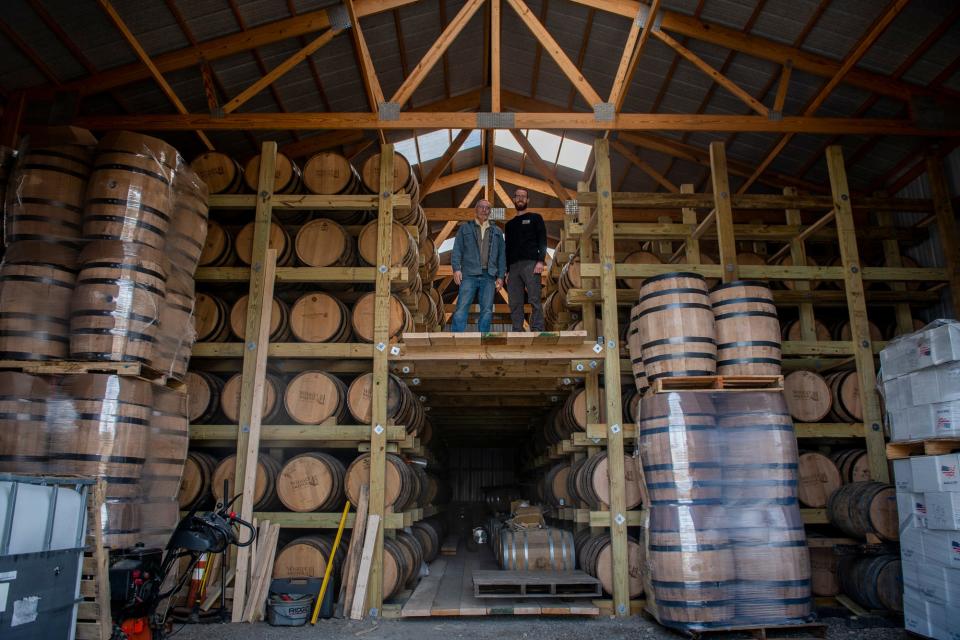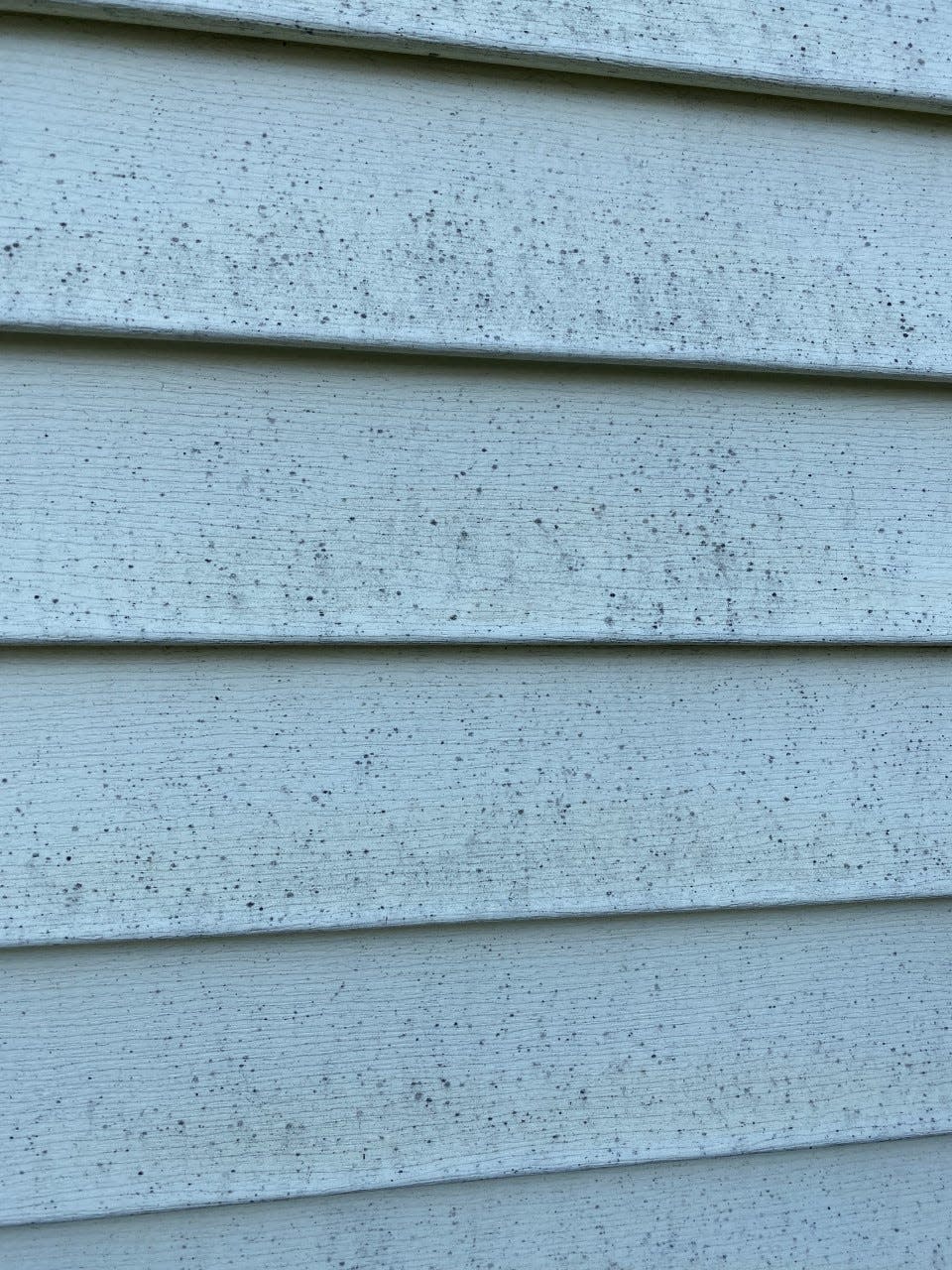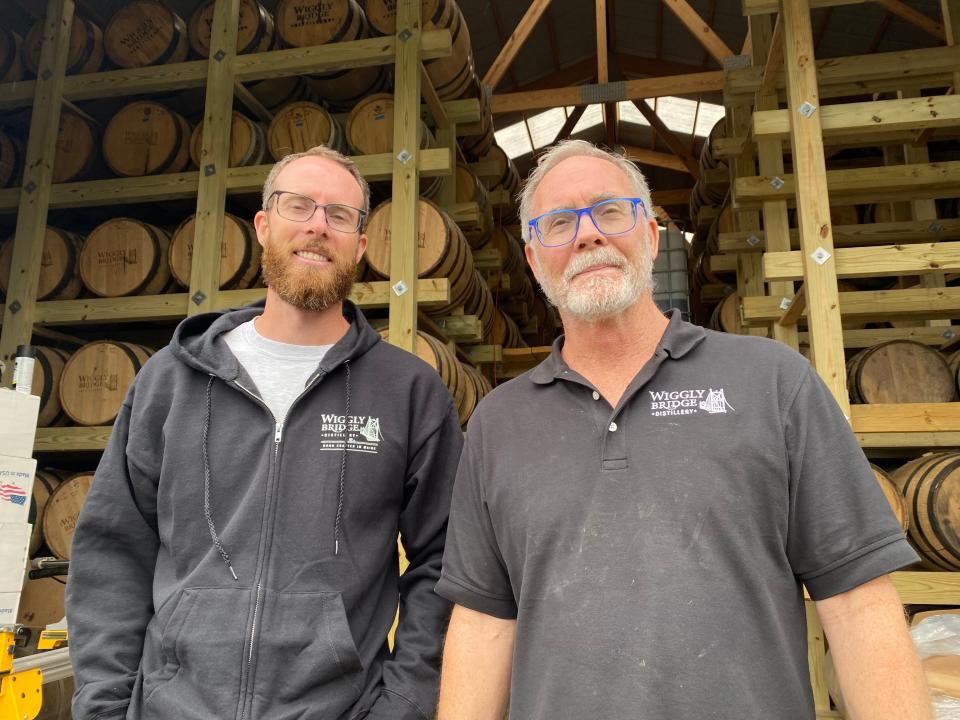Report: Wiggly Bridge Distillery coating York homes with whiskey fungus
YORK, Maine — A new report has concluded Wiggly Bridge Distillery is the likely source of nearby whiskey fungus, and the Planning Board will decide if this affects their approval for an expansion.
The distillery, which has sold award-winning spirits in York for 10 years, is hoping to build a new barrel house and expand its main building, a historic barn converted to a tasting area and production facility. Neighbors have expressed concern about the nearby presence of a fungus called Baudoinia, however, and are asking the town's Planning Board to deny the project in order to prevent an increase in the fungus.
Tora Johnson of the University of Maine at Machias was hired by the town after the Planning Board voted to seek an expert on the fungus in May. Her study was completed June 20 and used spatial analysis to determine it is “highly likely” that the distillery is the source of a cluster of nearby Baudoinia, which commonly grows near places that use ethanol. The fungus feeds on ethanol vapor and attaches itself to nearby buildings, trees, cars and other surfaces.

Now, the Planning Board will decide whether the presence of whiskey fungus will impact the distillery’s ability to expand its facility.
The town’s peer review consultant Chris Di Matteo wrote in July 20 letter to the board that they needed to determine if results from Johnson’s report affect Wiggly Bridge’s ability to conform to code. A section in the ordinance prohibits certain “dust, fumes, vapors and gases” emitted from industrial buildings.
The Planning Board was scheduled to hear the application July 27 but ran out of time that night, moving the application to a future meeting. David Woods, who owns and runs the distillery with his son David Woods II, said he was told he would be at the front of the line at their Aug. 24 meeting.

The fungus has been found to grow heavily in communities where larger distilleries operate in places like Kentucky. Residents near Wiggly Bridge have seen images of cars and buildings from those areas completely covered with the fungus, and they fear the same will come to York if the distillery grows.
The Woods family has said their proposed expansion would not bring to York a level of production close to the country’s biggest distillers in those Kentucky towns like Buffalo Trace. They have also argued there is no evidence of negative health effects caused by Baudoinia, with experts saying the answer is still unclear.
Planning Board Chair Wayne Boardman said even if the fungus has no adverse health effects, the board needs to take seriously the concern for the fungus’s impact on quality of life and property values.
“I understand it’s a big concern for the neighbors,” Boardman said. “That’s why we’re taking our time to make sure we understand as best we can all the factors involved.”
Special surprise: How York rallied to get electric bike for beloved town historian James Kences
Study shows Wiggly Bridge source of nearby whiskey fungus
In the new study, Johnson took samples from 100 locations within one mile of the distillery. Results came back and were put on a map to show levels of Baudoinia, as well as mycelia, her report states. Johnson then used statistical analysis of “hotspots,” according to the report, to determine the clusters of Baudoinia were centered on the distillery.
The goal of the study, according to the report’s introduction, was to “determine whether and to what degree whisky fungus contamination is escaping the Wiggly Bridge Distillery.” The study was commissioned by the town, according to Boardman, though paid for by the applicant, the distillery.
The whiskey fungus is the last hurdle for Wiggly Bridge to overcome in its application process. Di Matteo wrote in his letter to the board that the most up-to-date revised plans for the project address all other outstanding peer-review comments, “leaving only the whiskey fungus report results and conformance” to the town ordinance.
The ordinance in question, Section 6.3.4, refers to “dust, dirt, fly ash, fumes, vapors and gases which could endanger human health, animals, vegetation, or property, or which could soil or stain persons or property.” Those emissions are prohibited beyond the lot line of a commercial or industrial establishment creating them.
“The board will need to make a positive finding on this matter in order to grant final approval,” Di Matteo wrote to board members.
Meet the Yorkettes: Seniors shake it up at Short Sands Beach with flash mob dance
Board to consider the significance of whiskey fungus
Planning Board members have heard residents express concern for Baudoinia’s health effects in previous public hearings held during the Wiggly Bridge expansion application process. Experts say it is unknown whether there are health effects on humans.
Canadian researchers James Scott and Richard Summerbell wrote in a published report in 2016 that people “often express concern about the potential for negative health effects.” They wrote that, “although plausible,” that aspect of whiskey fungus has “not been evaluated.”
“Despite intensive study over the past few years, the genus Baudoinia remains mysterious,” Scott and Summerbell wrote.
Love, Lois: How an 80-year-old woman battling cancer became a local legend at York Beach
Boardman said that so little is known about whiskey fungus necessitates caution. This is the second study commissioned by the town, the previous one having turned up inconclusive results about the fungus.
Boardman said board members will read the report and discuss whether it meets the standard of the ordinance.
“It’s clear that the local residents are concerned,” Boardman said. “Even if it wasn’t a health issue, I’ve heard the comment that it will impact our quality of life or their property values.”
The father and son behind the Wiggly Bridge Distillery have argued that there is no evidence the whiskey fungus is causing harm to the community. Their attorney Matt Howell told the board in February that other molds and funguses are known to be dangerous “but specifically not this one.”

Woods II is a Planning Board member and has recused himself from the board during the Wiggly Bridge application process. He and his father have been making award-winning whiskey in York since 2013 and say they need this expansion to keep up with their growing demand.
His father said the application process has lasted longer than expected and has caused them to spend an additional $150,000 on design work.
“I’d much rather put that money into barrels,” Woods said.
Despite the delay, he is determined to finish the project.
“I’m prepared to go all the way that I need to go,” Woods said. “I think the last stop is the Maine Supreme Court.”
This article originally appeared on Portsmouth Herald: Wiggly Bridge Distillery coats York homes with whiskey fungus: study

